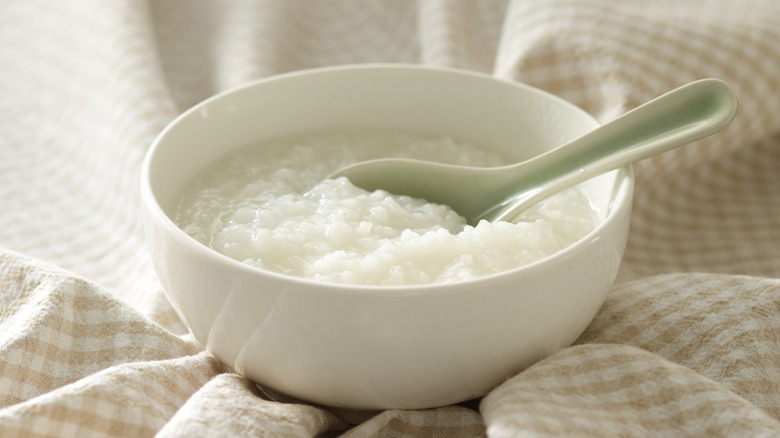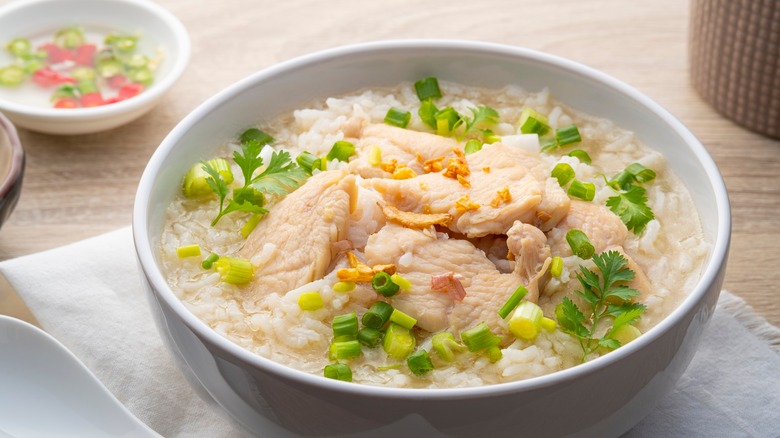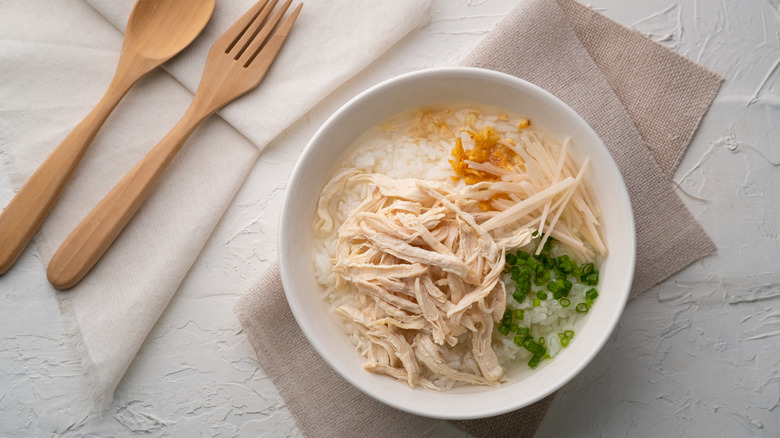Congee Is The Perfect Way To Deliciously Use Up Leftover Rice
In a world of endless dining options, the simplicity and versatility of rice help it to stand tall as one of the world's most popular foods. According to Statista, nearly 520,000 metric tons of rice were consumed worldwide in the 2021/2022 crop year. That's a lot of rice. One of the beset things about this grain is that it makes for great leftovers. The best fried rice is usually made from day-old rice, but if you're looking for something a little heartier to use up your leftovers, then look no further than congee.
Congee is essentially a simple rice porridge. All it takes is some rice and water or stock to turn uncooked or leftover rice into a silky smooth base for all sorts of flavors. Just like you can take oatmeal up a notch with a wide variety of toppings and flavoring agents, congee is a template that can make a great meal for breakfast, lunch, or dinner.
The dish is the ultimate comfort food for many people, because it is often given to young children when they're ill. This is because the porridge is easy to digest, and toppings like ginger or chicken stock can be added to help boost an immune response. While congee is frequently made with fresh rice, you can also save time and use up some leftovers by using pre-cooked rice instead.
How to make congee with leftover rice
The difference between using raw rice and pre-cooked rice to make congee is the amount of water that you'll need. Because pre-cooked rice has already absorbed a lot of water, you'll actually need to use more to get the correct texture. Any type of leftover rice can be used, though long grain or basmati rice will hold its shape the best. Either way, it will save you time because you won't need to soak the rice before cooking.
Start by adding your rice to a blender and add in your chosen broth (or water). Blend them all together until the rice has a uniform consistency. Add the mixture to a pot and bring it to boil over a medium heat. Once it begins to boil, turn the heat down to a simmer and let it cook until it reaches your desired texture. The congee will continue to thicken more as it rests, so you may want to remove it from the heat when it is slightly more runny than you prefer. Once it's been cooked, you can add soy sauce, sesame oil, or any other toppings or sauces for flavor. We prefer flavoring our chicken congee with leftover chicken, ginger, and fried garlic and shallots.
History of congee
Congee is a millennia-old dish that has spread throughout the Asian continent, and is now passed on throughout the diaspora of immigrant families living abroad. The dish is believed to be about 3,000 years old, and originated in China during the Zhou dynasty. The earliest known mentions come from the Chinese Record of Rites, which contains descriptions of the dynasty's formal rituals.
The early forms of congee were also made with a wide variety of different grains. Rice was most popular in the south, where it was easily accessible, but in the north, sorghum, barley, and millet were often used instead. The name "congee" comes from the Tamil word "kanji," which Portuguese colonizers in the 16th century called "canje." From there, it became anglicized to "congee." Today,
congee — and the many other forms of rice porridge — exist as a cultural landmark for Asian-descendant immigrants


